Health
High levels of resistant bacteria found in uncooked meats and raw dog food: ‘Red flag’
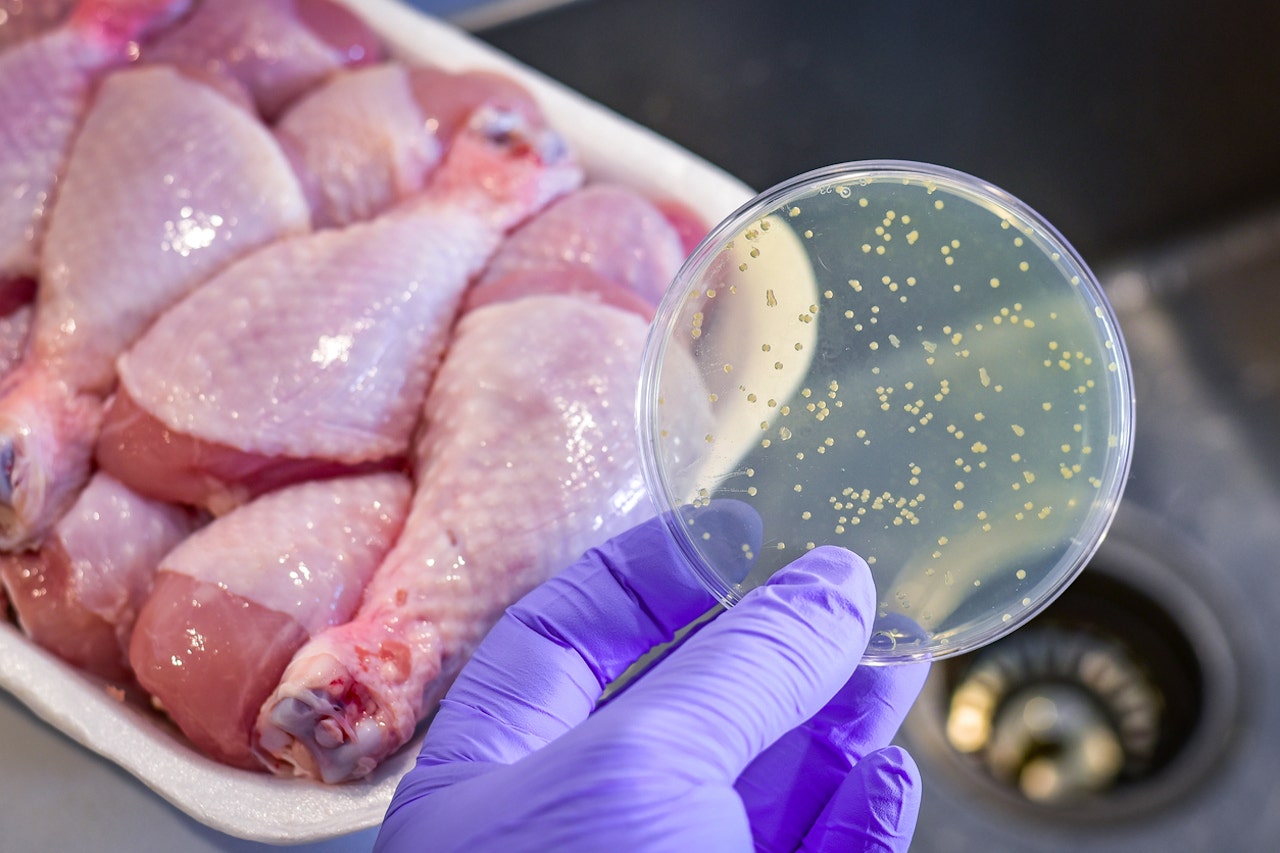
High levels of E. coli were found in uncooked meats and raw dog food sold in grocery stores in the U.K., according to research presented last week at the European Society of Clinical Microbiology and Infectious Diseases (ESCMID) Global Congress in Barcelona.
Researchers from the University of Bristol examined 58 samples of raw beef, chicken, pork and lamb sold at grocery stores in the U.K., along with 15 samples of raw dog food sold at “specialty pet stores,” according to a press release.
Eighty-one percent of the meat samples and 87% of the dog food samples were found to contain E. coli (Escherichia coli) that was resistant to antibiotics.
E.COLI BACTERIA DETECTED IN GRAND CANYON NATIONAL PARK’S WATER SUPPLY
The raw chicken had the highest levels of the resistant intestinal bacteria.
“E. coli is an intestinal bacteria that may propagate in cows and chickens used for meat, especially when they are raised in squalor or close together,” Dr. Marc Siegel, clinical professor of medicine at NYU Langone Medical Center and a Fox News medical contributor, told Fox News Digital.
High levels of E. coli were found in uncooked meats and raw dog food sold in grocery stores, according to research presented last week at the European Society of Clinical Microbiology and Infectious Diseases (ESCMID) Global Congress in Barcelona. (iStock)
“Since poultry and meat cows are often fed antibiotics to help them grow and to ward off infections, this helps to breed resistant strains, which emerge amid antibiotic overuse.”
MEAT CONTAMINATED WITH E. COLI COULD CAUSE HALF A MILLION URINARY TRACT INFECTIONS EACH YEAR, STUDY FINDS
Siegel was not involved in the study.
“This study confirms that uncooked meat carries multiple resistant E. coli, commonly including resistance to critically important antibiotics important for human health,” the study authors said in a press release from ESCMID.

“E. coli is an intestinal bacteria that may propagate in cows and chickens used for meat, especially when they are raised in squalor or close together.” (iStock)
If ingested, the bacteria could colonize the intestines and cause resistant infections, according to study author Matthew B. Avison, a professor at the School of Cellular & Molecular Medicine, University of Bristol.
“They can sit in your gut for years without causing sickness, and in some cases the bacteria will cause different types of disease later on, including urinary tract infections and bloodstream infections that can kill,” Avison told Fox News Digital.
“Infections with resistant bacteria are more difficult to treat and so are more likely to get worse.”
RAW DIET FOR DOGS IS TAKING OVER TIKTOK, BUT WHAT DOES YOUR VETERINARIAN THINK OF THE LATEST TREND?
Uncooked meat sold to be eaten by people after cooking is “commonly contaminated” with antibiotic-resistant E. coli, Avison noted.
The study results weren’t surprising, he said, as there have been “numerous reports” of antibiotic-resistant bacteria in uncooked meat and some studies showing this in raw dog food.
“In some cases, the bacteria will cause different types of disease later on, including urinary tract infections and bloodstream infections.”
“People often believe that because raw dog food is sold frozen, the freezing kills the bacteria, but we have shown that it does not,” Avison told Fox News Digital.
“There were just as many samples of chicken-based raw dog food contaminated with resistant E. coli than there were samples of raw chicken meat. If you feed your dog raw meat, therefore, you are likely feeding it antibiotic resistant E. coli.”
These findings explain why researchers previously found a strong link between feeding dogs raw meat and the dogs excreting resistant E. coli in their feces, Avison noted.
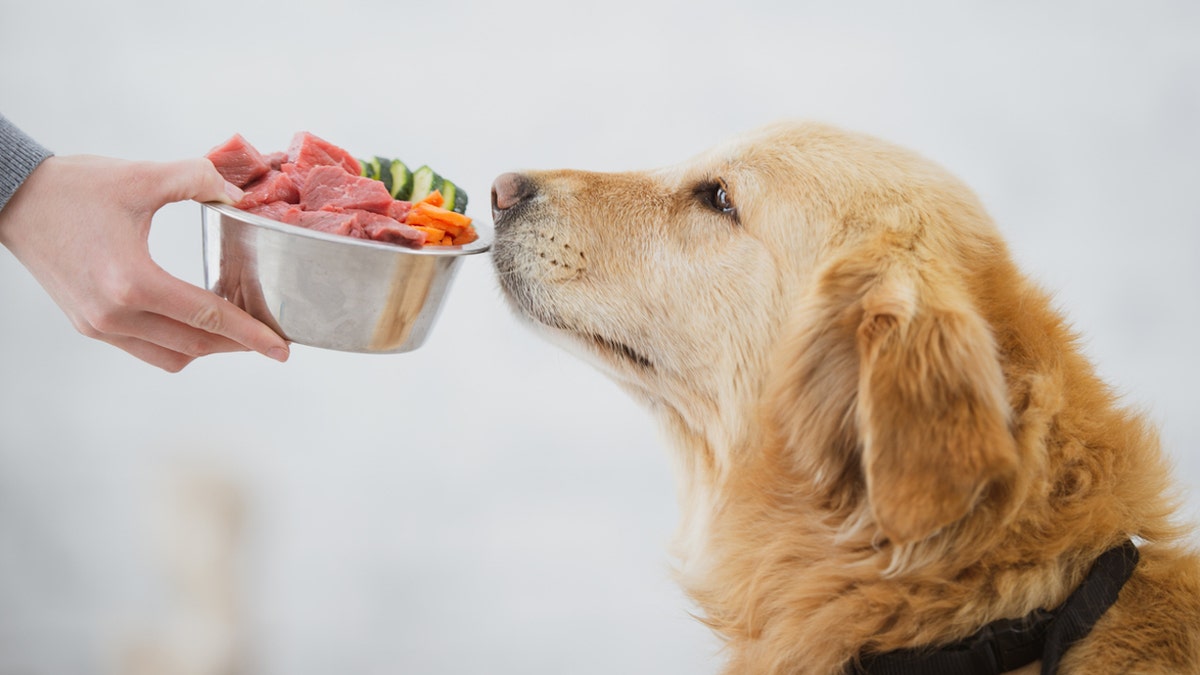
“People often believe that because raw dog food is sold frozen, that freezing kills the bacteria on it, but we have shown that it does not,” a researcher told Fox News Digital. (iStock)
Most people are not aware of the risk of these antibiotic-resistant pathogens, the researchers stated in the release.
They emphasized the importance of cooking meat thoroughly before eating, and using “appropriate hygiene practices” while preparing it.
“Cooking the meat properly will kill those bacteria,” Avison advised.
‘GENTLE GIANT’ DOG, AT 250 POUNDS, EATS AN ENTIRE CHICKEN DAILY AS OWNER SPENDS NEARLY $5K A YEAR ON FOOD
“Treat all raw meat as if it were contaminated with antibiotic-resistant bacteria and assume dogs fed raw meat will be excreting resistant bacteria,” he went on.
“Use appropriate hand-washing and general hygiene practices to minimize the risk that you and other people will accidentally ingest these bacteria.”
“If you feed your dog raw meat, you are likely feeding it antibiotic resistant E. coli.”
Dog owners who feed raw meat to their pets should dispose of the animals’ waste hygienically, Avison said.
“Don’t let your dog lick your face or share your bed, and wash your hands after petting it,” he recommended. “These are all common sense practices anyway, but even more important if you raw-feed your dog.”
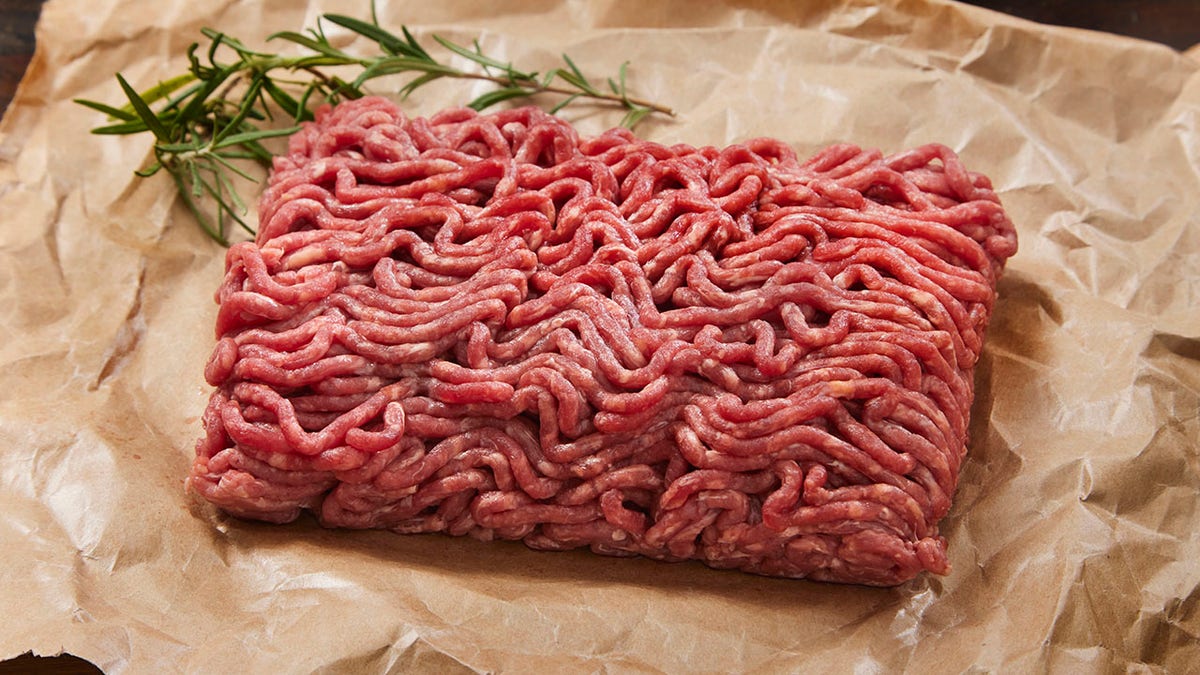
Researchers emphasized the importance of cooking meat thoroughly before eating, and using “appropriate hygiene practices” while preparing it. (iStock)
“And, of course, treat raw dog food as if it were any raw meat, in terms of hygiene and cleaning practices.”
The study raises a “red flag,” Siegel said, underscoring the importance of making sure that poultry and meat is fully cooked prior to human consumption, and that dog food is also cooked.
CLICK HERE TO SIGN UP FOR OUR HEALTH NEWSLETTER
Andre Delattre, chief operating officer of Public Interest Research Groups (PIRG) in Washington, D.C., said the study “underscores the importance of ending the practice of routine use of antibiotics in animal agriculture.”

“Use appropriate hand-washing and general hygiene practices to minimize the risk that you and other people will accidentally ingest these bacteria,” researchers said. (iStock)
“An inevitable byproduct of antibiotic overuse is resistance to these drugs,” he told Fox News Digital.
“Studies have also shown that meat raised without antibiotics is less likely to be contaminated with resistant bacteria.”
The University of Bristol study was published on a pre-print server and has not yet been peer-reviewed.
Fox News Digital reached out to the U.K. Food Standards Agency (FSA) and the U.S. Food and Drug Administration (FDA) for comment.
For more Health articles, visit www.foxnews.com/health.

Health
CDC, WebMD give update on current bird flu outbreak: ‘Be alert, not alarmed’
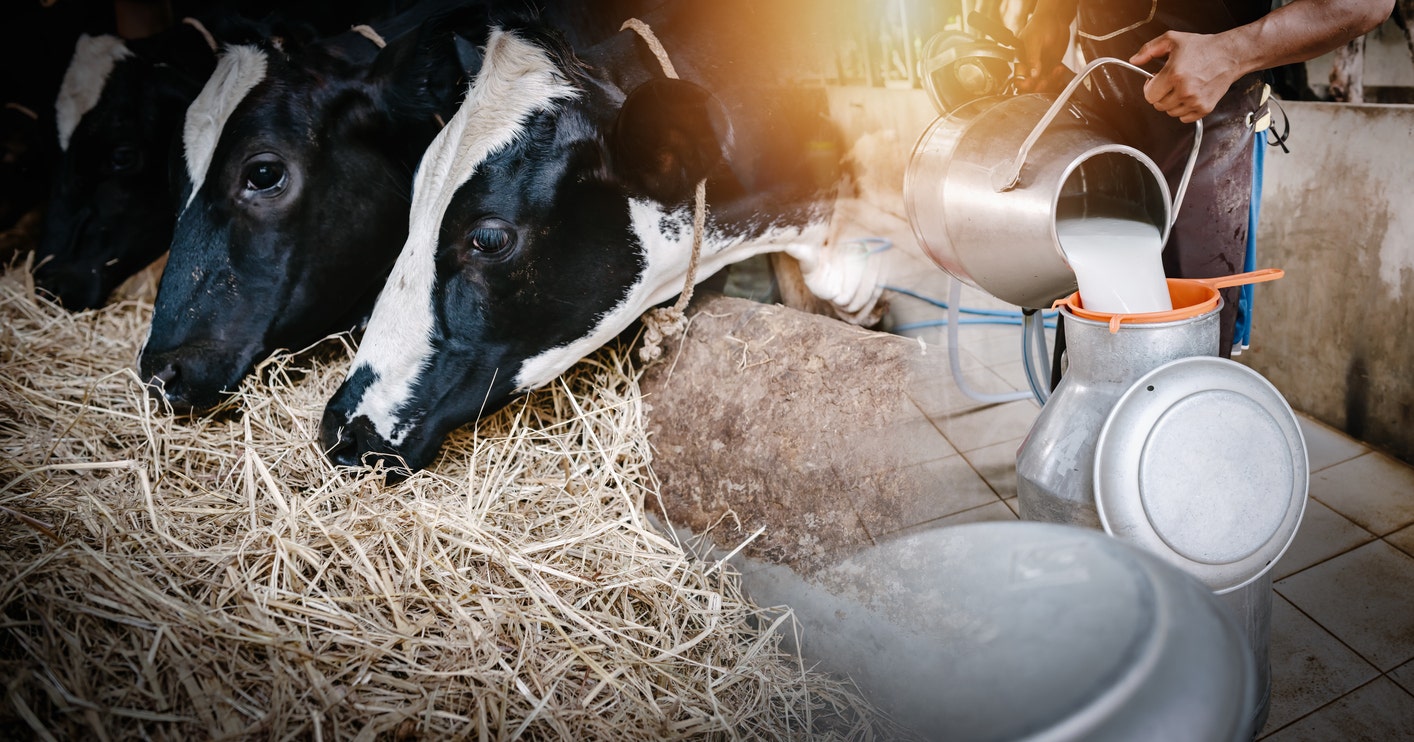
As bird flu continues to spread among cattle in the U.S., WebMD and the Centers for Disease Control and Prevention (CDC) joined forces on Thursday to present a live-streamed briefing on the status of the outbreak.
The presentation, called “WebMD and CDC Presents, 2024 Bird Flu: What You Need to Know,” was moderated by Neha Pathak, M.D., chief physician editor for WebMD in Atlanta, Georgia.
The first reports of sick dairy cows came to the USDA in early March, according to Eric Deeble, deputy assistant secretary for the Office of Congressional Relations at the United States Department of Agriculture (USDA) in Washington, D.C.
AMID BIRD FLU SPREAD, EXPERTS REVEAL IF IT’S SAFE TO DRINK MILK
Testing revealed that the cows had contracted H5N1, more commonly known as avian influenza, or bird flu.
“Any new disease of cattle is a great concern to us,” Deeble said during the briefing.
As bird flu continues to spread among cattle in the U.S., WebMD and the CDC issued an update on Thursday. (Getty Images)
“The H5N1 in cattle is a relatively mild disease. They generally recover after supportive care” within two to three weeks, he said.
“Their milk volume returns to normal, and they appear healthy and continue to feed as they did before they became sick.”
“Any new disease of cattle is a great concern to us.”
So far, the USDA has detected H5N1 in 49 dairy herds in nine states, Deeble stated.
“To put that into perspective, that’s around 1% of dairy farms in the affected states and about 1/10th of 1% nationally,” he said.
On April 29, a federal order from the USDA took effect, limiting the movement of lactating dairy cattle in an effort to monitor and compile H5N1 test results.
TEXAS CATS DIE ON DAIRY FARM AFTER DRINKING RAW MILK CONTAMINATED WITH BIRD FLU, CDC WARNS
“Under this order, dairy farmers are required to test their cows before moving them across state lines so that we know those cows are H5N1-free and don’t pose a risk to any new herd,” Deeble said.
The order also requires that any test results that detect the presence of H5N1 are reported to USDA labs.
No current food risk, experts say
Deeble assured those tuning in on Thursday that there is no risk with consuming milk and meat.
“I can say without reservation that our commercial milk and meat supplies are safe,” he said. “At no time were animals that are sick from H5N1 or any other animal disease permitted to enter into our food supply.”
He added, “USDA has never detected H5N1 in meat sold at retail.”
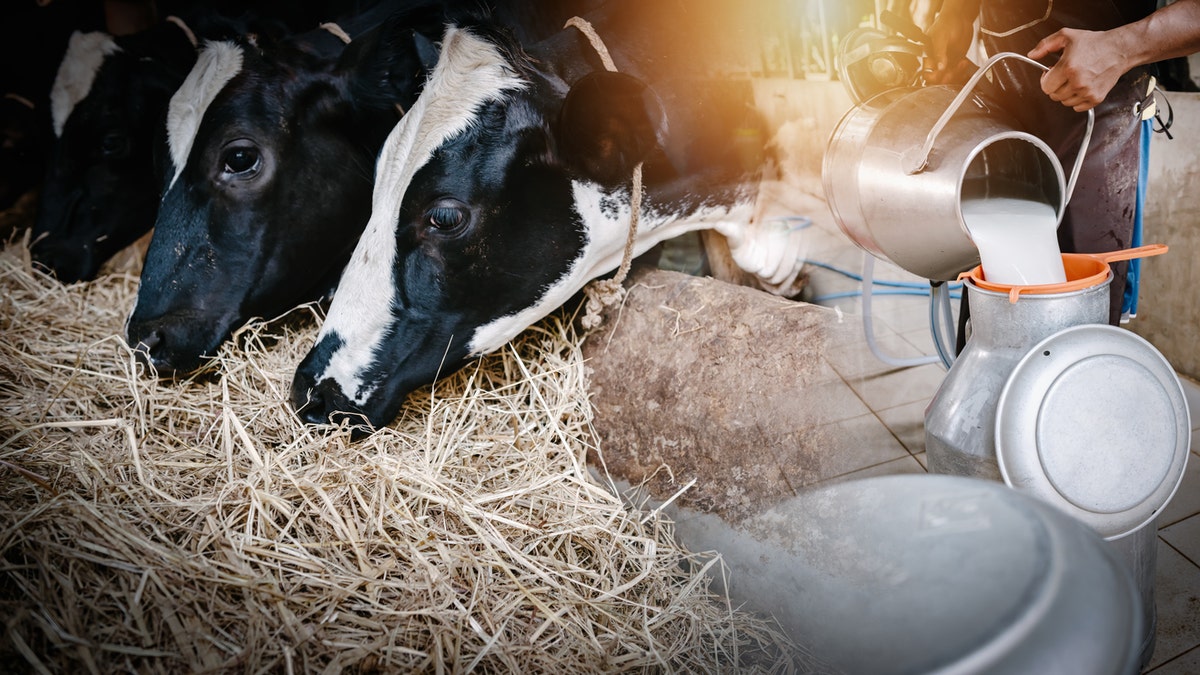
The first reports of sick dairy cows came to the USDA in early March, health officials said. (iStock)
Tests have confirmed that cooking meat to an internal temperature of 155 or above is sufficient to eliminate all traces of the virus, Deeble noted.
For milk, the pasteurization process ensures it is safe to drink, he said.
“Our milk is cleared to a high temperature for a brief period of time, inactivating H5N1, as well as other bacteria and viruses that could make someone sick,” he said.
Risk of transmission to humans
The overall risk to the public from bird flu is low, according to Dr. Nirav D. Shah, M.D., principal deputy director of the CDC in Atlanta.
“That is in part because it’s rare for people to get infected with bird flu viruses — but it has happened,” he said during the briefing.
“If and when it does happen, it’s most often through direct unprotected contact with infected animals — for example, not wearing gloves, face masks or eye protection.”
COULD A BIRD FLU PANDEMIC SPREAD TO HUMANS? HERE’S WHAT YOU NEED TO KNOW
In April, the CDC reported one human case of bird flu in a dairy worker in Texas, Shah said.
“This person’s only symptom was eye redness, or conjunctivitis,” he said. “After testing positive, this person was provided [with] an antiviral medicine and thankfully made a full recovery. There have been no new or additional human cases since this individual in Texas.”
Other symptoms to watch for include cough, fever, muscle aches and fatigue, according to Shah.
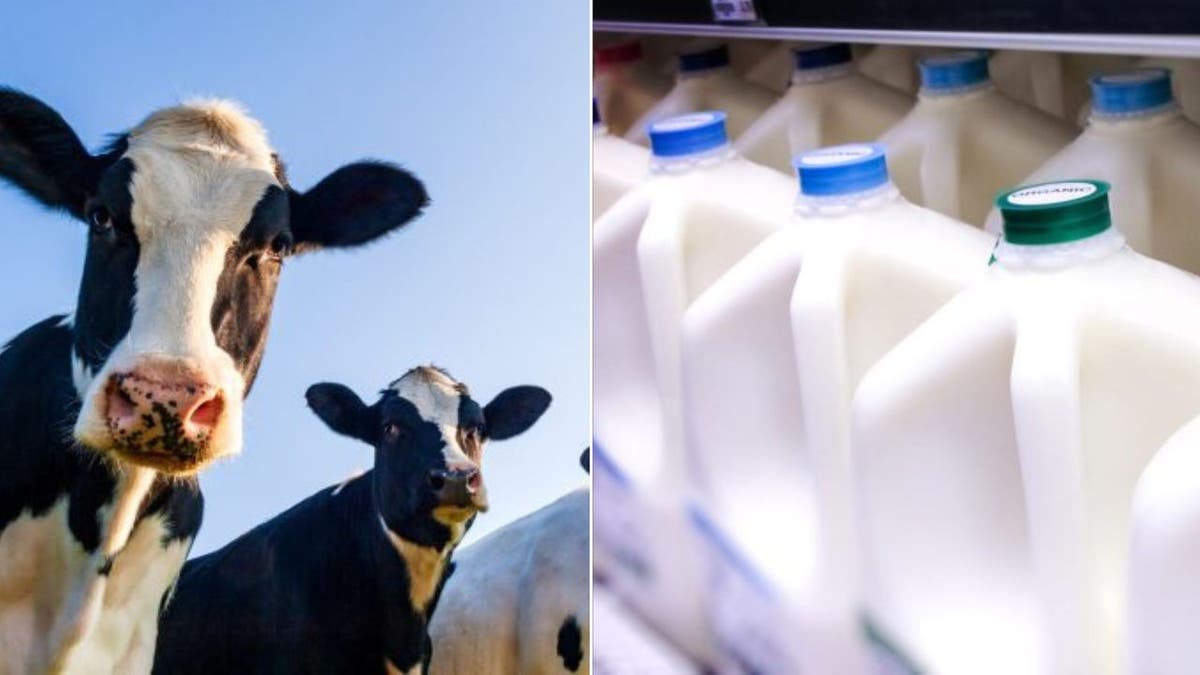
Experts said there is no risk associated with drinking milk purchased commercially. (iStock)
Although the overall risk to humans is low, the CDC is taking “aggressive steps” to make sure Americans stay well and informed, Shah said.
“Right now, one of our top areas of focus is around farm worker safety and protection — specifically making sure that workers have access to personal protective equipment … like gloves, goggles or face masks, which can help reduce their risk of exposure if they happen to be working around affected cows.”
MAINE WILDLIFE AUTHORITIES FIND 6 DEAD WILD DUCKS THAT TESTED POSITIVE FOR BIRD FLU
The CDC is also working with local health departments to ensure that sick farmers are tested for bird flu and to monitor their status.
“In addition to that, scientists in our laboratories here at CDC are looking closely at the bird flu viruses to see if there are any changes in their DNA that might tell us if these viruses are able to spread more easily to people, between people, and, importantly, whether they might be causing more serious illness,” Shah added.
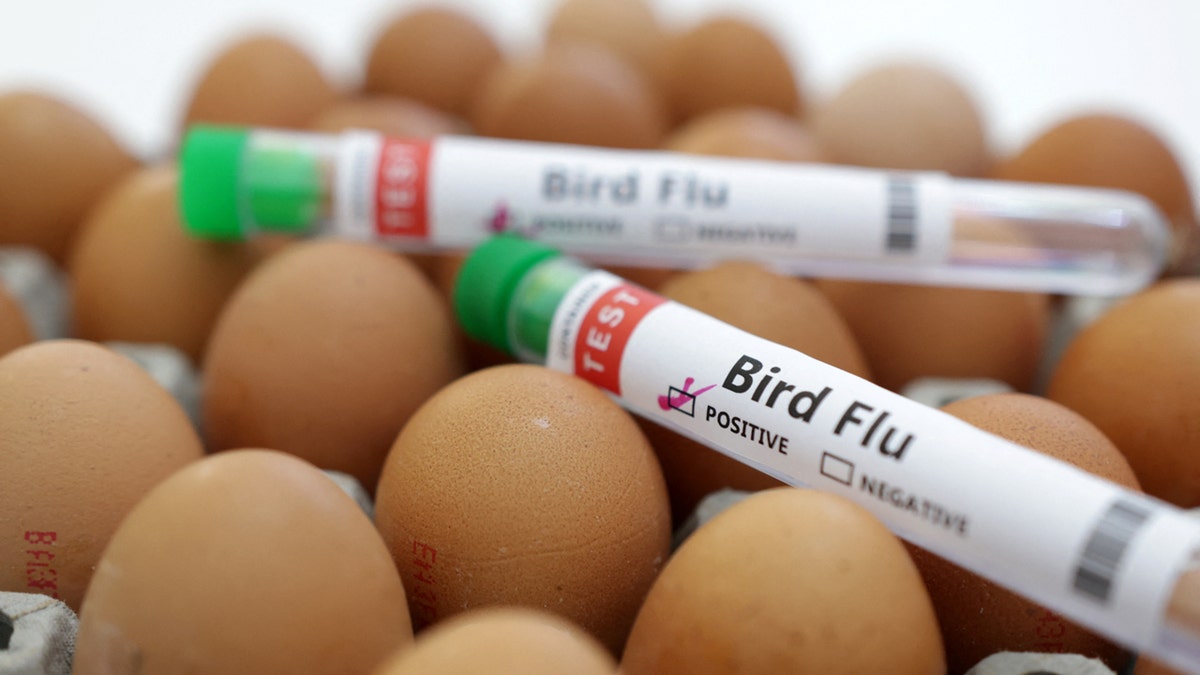
Although the overall risk to humans is low, the CDC is taking “aggressive steps” to make sure Americans stay well and informed, a doctor said. (REUTERS/Dado Ruvic/Illustration/File Photo)
Although the risk to the public “remains low” currently, the doctor offered guidance for certain groups that may be at a higher risk.
“If you happen to work around animals, whether it’s chickens, whether it’s cattle, or whether it’s pigs, and you develop signs and symptoms that might otherwise be the flu, it’s important to make sure you call a health care provider and have a conversation with them.”
Not another COVID, experts say
The current situation with bird flu is different from the early days of COVID-19, Shah said during the briefing.
“We are in a much different place because of over two decades of investment in planning and preparing for things like influenza,” he said.
CDC WARNS OF INVASIVE BACTERIAL OUTBREAK AMID SPIKE IN CASES AND FATALITY RATES: ‘RARE BUT SEVERE’
“As a result of that extensive planning and preparedness, there are medicines in place.”
If those medications are given early, they can reduce the severity and duration of illness, as was the case with the farmer in Texas, Shah noted.
“This is just one of many ways in which … influenza and bird flu differs from what many of us remember from four years ago,” he added.
Vaccines and prevention
The traditional influenza vaccine doesn’t provide much protection against avian flu, the experts noted.
“Even though they are … basically the same virus, they differ just enough to where the flu shot — which we hope everyone gets — doesn’t do a great job at protecting you,” said Shah.
“It might do a little bit of work, but it’s not enough to take you to the bank.”

“We’re not at a spot where vaccination is recommended for anyone,” a doctor said in the briefing on Thursday. (Julian Stratenschulte/dpa)
David Boucher, PhD, director of Infectious Diseases Preparedness and Response at ASPR in Washington, D.C., spoke during the Thursday briefing about the potential need for a bird flu vaccine.
“We’re not at a spot where vaccination is recommended for anyone,” he said.
Through the National Influenza Vaccine Program, the ASPR works with health partners to identify influenza viruses that are “just a little bit different from the things that we’ve seen in the past,” Boucher said.
WITH WHOOPING COUGH CASES ON THE RISE, DO YOU NEED A BOOSTER VACCINE?
For a novel virus, the team develops “building blocks” of a vaccine, he noted.
“The good news here is that this system has worked the way we hoped it would, and we have an initial supply of the building blocks we would need if we needed vaccines for the [H5N1] virus,” he said.
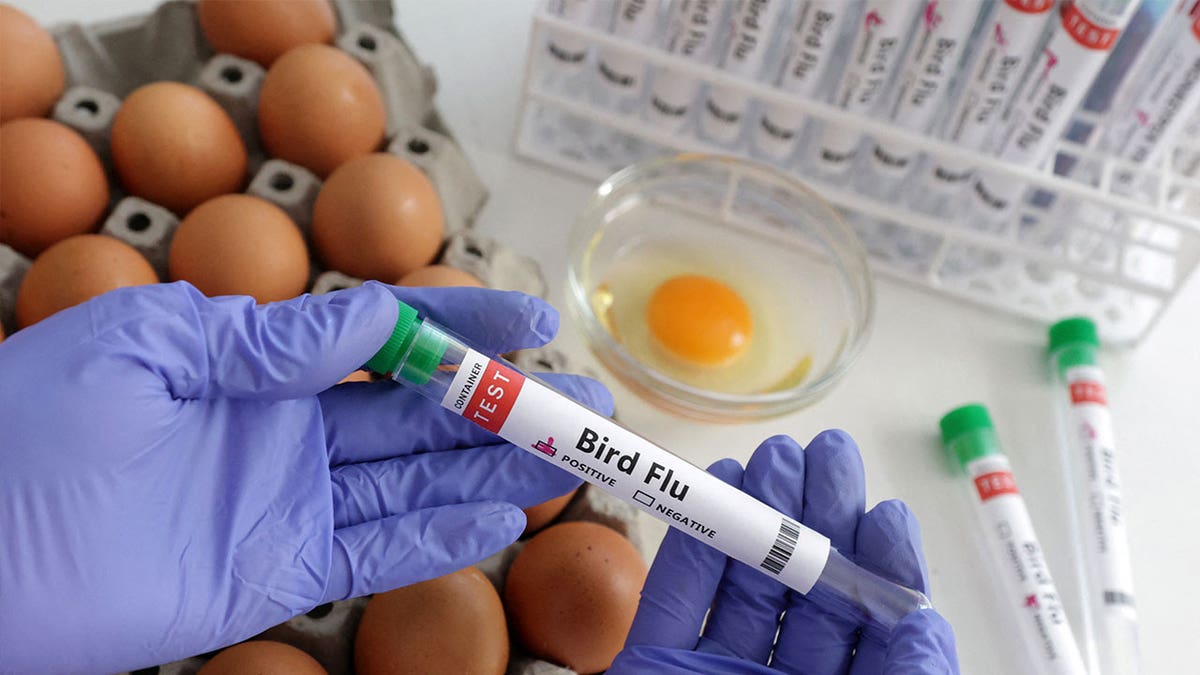
To monitor potential spread, the CDC is on the lookout for an increase in emergency department visits or laboratory tests that might signal a “cluster of cases,” a doctor said. (REUTERS/Dado Ruvic/Illustration)
In that scenario, Boucher said, the ASPR could partner with manufacturers of seasonal influenza vaccines for “large-scale” production.
Boucher also emphasized the importance of personal protective equipment (PPE) — such as gloves, goggles, face shields and N95 masks — for agricultural workers who may be close to infected animals.
CLICK HERE TO SIGN UP FOR OUR HEALTH NEWSLETTER
To monitor potential spread, the CDC is on the lookout for an increase in emergency department visits or laboratory tests that might signal a “cluster of cases,” Shah said.
“We’re also more recently looking at wastewater to see if there are changes there,” he said.
People can stay up to date on the latest bird flu developments from the CDC, the USDA, the FDA and other trusted sources of information, Shah added.
“We should be alert, not alarmed.”
For more Health articles, visit www.foxnews.com/health.
Health
The Atkins Diet: Behind the Staple Weight Loss Plan | Woman's World

Sign Up
Create a free account to access exclusive content, play games, solve puzzles, test your pop-culture knowledge and receive special offers.
Already have an account? Login
Forgot your password?
Get back to the Sign In
Use left and right arrow keys to navigate between menu items.
Use escape to exit the menu.
Health
A cancer patient's second chance at motherhood, plus a pastor's journey through depression

Kelly Spill of New Jersey was a new mom with a 1-month-old son (shown at left) when she was diagnosed with stage 3 colorectal cancer. (Kelly Spill)
SECOND CHANCE – A New Jersey mother was able to have another baby thanks to an experimental cancer therapy that protected her fertility. Continue reading…
STICKER SHOCK – Health services could cost significantly more for patients who have private insurance coverage. Doctors discuss the discrepancy. Continue reading…
‘STAY WELL’ – A pastor shares his own journey through depression and tips for others to protect their mental health. Continue reading…

Mark Dance, pictured with his wife, Janet Dance, said he suffered through a three-year period of depression while serving as a pastor. (Dr. Mark Dance)
NINE LIVES – A life-saving medication for cats is finally poised to be available in the U.S., putting pet owners’ minds at ease. Continue reading…
TAKING A TOLL – A large share of nurses are planning to leave the profession, a new report reveals. Here’s why they’re fed up. Continue reading…

More than one-third of the nurses who took part in a recent survey of 1,155 nurses across the U.S. are “extremely likely” to change jobs. (iStock)
ANTI-DEMENTIA DIET? – A common cooking ingredient has been linked with reduced dementia mortality risk. Nutritionists weigh in. Continue reading…
TECH TROUBLES – Using artificial intelligence for patient communications may not reduce burnout as much as expected, studies show. Continue reading…
NATURE’S MEDICINE – An orangutan healed its own wound using medicinal leaves found in the wild. See the amazing photos. Continue reading…

An orangutan that sustained a facial wound, shown on the left, treated it himself, according to a study published in the journal Scientific Reports earlier this month. In the image on the right, his scar is just barely noticeable. (Armas Fitra & Safruddin & TNGL & KLHK & MPI & UNAS & YEL)
FOLLOW FOX NEWS ON SOCIAL MEDIA
YouTube
SIGN UP FOR OUR NEWSLETTERS
Fox News First
Fox News Opinion
Fox News Lifestyle
Fox News Health
Fox News Autos
Fox News Entertainment (FOX411)
DOWNLOAD OUR APPS
Fox News
Fox Business
Fox Weather
Fox Sports
Tubi
WATCH FOX NEWS ONLINE
Fox News Go
STREAM FOX NATION
Fox Nation
-

 Politics1 week ago
Politics1 week agoBiden takes role as bystander on border and campus protests, surrenders the bully pulpit
-

 Politics1 week ago
Politics1 week ago'You need to stop': Gov. Noem lashes out during heated interview over book anecdote about killing dog
-

 Politics1 week ago
Politics1 week agoRFK Jr said a worm ate part of his brain and died in his head
-

 News1 week ago
News1 week agoMan, 75, confesses to killing wife in hospital because he couldn’t afford her care, court documents say
-

 World1 week ago
World1 week agoPentagon chief confirms US pause on weapons shipment to Israel
-

 Politics1 week ago
Politics1 week agoHere's what GOP rebels want from Johnson amid threats to oust him from speakership
-

 World1 week ago
World1 week agoPro-Palestine protests: How some universities reached deals with students
-

 World1 week ago
World1 week agoConvicted MEP's expense claims must be published: EU court















